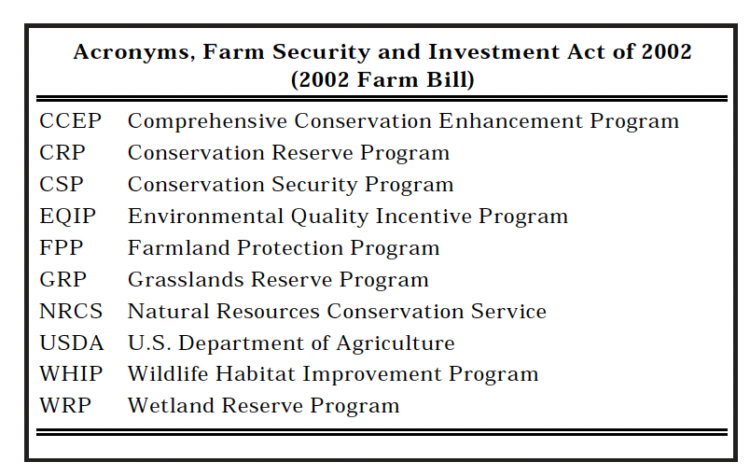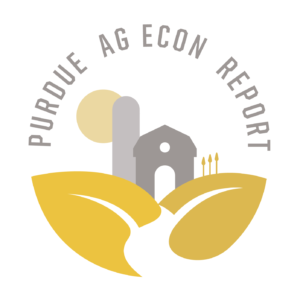Doing Good While Doing Well: Conservation In the 2002 Farm Bill
June 13, 2002
PAER-2002-5
Steve Lovejoy, Professor
The recently enacted 2002 Farm Bill is the most ambitious and costly set of stewardship programs ever proposed. While several issues must be addressed when USDA sets specific rules for participation in some programs, others seem relatively clear in the law as passed by Congress.
In the 2002 Farm Bill, Congress has authorized the spending of over $17 billion on a wide array of conservation programs; this represents significant growth in conservation programs. Many of the familiar environmental programs have been reauthorized, including the CRP, EQIP and WHIP. In addition, we have several new significant programs, including the CSP, a revamped FPP, and the GRP.
This new legislation is our first real attempt to utilize payments for environmentally sound behavior that falls outside the idea of adopting new practices or temporarily retiring the land. These “green payments” will be for behavior covered by contracts under the Conservation Security Program, and all agricultural producers will be eligible.
Several critical issues surround these new and reauthorized programs:
- As with every new program, rules will have to be established for operation of the CSP program. Until these rules are made, there is great uncertainty about how the program will operate and what its impact might be. The main concern is how these programs will be administered and how the participant selection process, ancillary technical services, monitoring, enforcement, and evaluation can be accomplished for such expanded programs. The rules governing the programs will be critical to the success or failure of the programs.
- The new Farm Bill proposes a tremendous ramp-up in the EQIP program. Key questions are (a) whether the nature of the program will change, (b) can adequate technical assistance be provided, (c) will the sheer size of the program prevent effective targeting, (d) will the increasing proportion of dollars spent on animal production units affect the overall objectives, and (e) what is the impact of allowing large livestock operators to participate.
- The impact that some of the rule changes will have on existing programs is in doubt. For example, what will be the impact of the new attempt to allow some economic use, such as grazing on lands in the CRP, CSP, FPP, and the GRP?
- While the legislation now allows for crop consultants and others to provide technical assistance to farmers and ranchers, it is unclear how this might work or who will be certified to provide information to program participants?
- Will the new and existing conservation programs be treated as neutral under the trade agreements? Will they maintain their “green box” status given the expansion of the programs and the increasing concern of our trading partners with the level and kinds of subsidies we provide to producers under the new Farm Bill? For example, if the EQIP program were seen as providing large capital inflows into the livestock industry for waste facilities that allowed the industry to concentrate more capital to greatly expand production at lower cost, this might be seen as trade-distorting. The critical issues will be whether the conservation expenditures are only minimally trade distorting and whether they actually do result in attaining conservation and environmental goals.
Concluding Comments
- Essentially, the conservation title is NOT a radical departure from the programs USDA has been implementing over the past several years.
- The Conservation Security Program (CSP) is a new and very different approach to conservation and stewardship.
- It encompasses a much broader segment of the agricultural community by including producers of all commodities.
- It rewards those producers who presently maintain or agree to begin a more sustainable production system.
- It shifts the distribution of payments geographically, by commodity, by size of operation.
- This farm bill greatly increases the resources available to assist agricultural producers and landowners in reducing environ-mental harms and increasing the environmental amenities provided by the agricultural sector.
- An area of concern is that the increased subsidies for agricultural production will make higher incentives for conservation behavior necessary, increase the required conservation expenditures and intensify the competition between the conservation and commodity programs.
The 2002 Farm Bill is very aggressive at protecting the environment and offers a tremendous opportunity for farmers to provide environmental amenities while also contributing to their bottom line and their business’s viability (Doing good while doing well).

Acronyms, Farm Security and Investment Act of 2002 (2002 Farm Bill)
